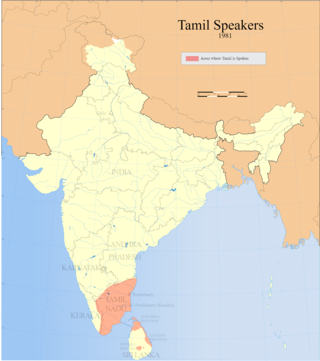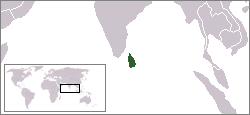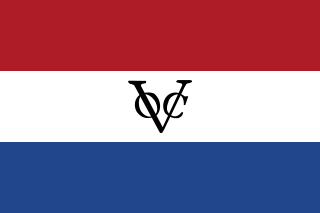Related Research Articles

Batticaloa is a major city in the Eastern Province, Sri Lanka, and its former capital. It is the administrative capital of the Batticaloa District. The city is the seat of the Eastern University of Sri Lanka and is a major commercial city. It is on the east coast, 111 kilometres (69 mi) south of Trincomalee, and is situated on an island. Pasikudah is popular tourist destinations situated 35 km northwest with beaches and flat year-round warm-water shallow-lagoons.
Burgher people, also known simply as Burghers, are a small Eurasian ethnic group in Sri Lanka descended from Portuguese, Dutch, British and other European men who settled in Sri Lanka and developed relationships with native Sri Lankan women. The Portuguese and Dutch had held some of the maritime provinces of the island for centuries before the advent of the British Empire. With the establishment of Ceylon as a crown colony at the end of the 18th century, most of those who retained close ties with the Netherlands departed. However, a significant community of Burghers remained and largely adopted the English language. During British rule they occupied a highly important place in Sri Lankan social and economic life.
Sri Lanka Indo-Portuguese, Ceylonese Portuguese Creole or Sri Lankan Portuguese Creole (SLPC) is a language spoken in Sri Lanka. While the predominant languages of the island are Sinhala and Tamil, the interaction of the Portuguese and the Sri Lankans led to the evolution of a new language, Sri Lanka Portuguese Creole (SLPC), which flourished as a lingua franca on the island for over 350 years. SLPC continues to be spoken by an unknown, extremely small population. All speakers of SLPC are members of the Burgher community: descendants of the Portuguese and Dutch who founded families in Sri Lanka. Europeans, Eurasians and Burghers account for 0.2% of the Sri Lankan population. Though only a small group of people actually continue to speak SLPC, Portuguese cultural traditions are still in wide practice by many Sri Lankans who are neither of Portuguese descent nor Roman Catholics. SLPC is associated with the Sri Lanka Kaffir people, an ethnic minority group. SLPC has been considered the most important creole dialect in Asia because of its vitality and the influence of its vocabulary on the Sinhalese language. Lexical borrowing from Portuguese can be observed in many areas of the Sinhalese language. Portuguese influence has been so deeply absorbed into daily Sri Lankan life and behavior that these traditions will likely continue into perpetuity.
Sri Lankan English or Ceylonese English is the English language as it is used in Sri Lanka. In Sri Lanka it is colloquially known as Singlish, a term dating from 1972. Sri Lankan English is principally categorised as the Standard Variety and the Non-standard Variety, which is called as "Not Pot English".The classification of SLE as a separate dialect of English is controversial. English in Sri Lanka is spoken by approximately 23.8% of the population, and widely used for official and commercial purposes. Sri Lankan English being the native language of approximately 5400 people thus challenges Braj Kachru's placement of it in the Outer Circle. Furthermore it is taught as a compulsory second language in local schools from grade one to thirteen and Sri Lankans pay special attention on learning English both as children and adults. It is considered even today that access and exposure to English from one's childhood in Sri Lanka is to be born with a silver spoon in one's mouth.
The Portuguese Burghers are an ethnic group in Sri Lanka, of mixed Portuguese and Sri Lankan descent. They are Roman Catholic and spoke the Sri Lanka Indo-Portuguese language, a creole based on Portuguese. In modern times, English has become the common language while Sinhalese is taught in school as a second language. Many Portuguese Burghers living on the east coast of Sri Lanka are of Portuguese descent; this is evident in the Sri Lanka-Indo Portuguese language, which has many affiliations to Sinhalese and Portuguese. They are mixed with other Burgher people, including Dutch Burghers. However, Portuguese Burghers are not Dutch Burghers.
The Sri Lankan Kaffirs are an ethnic group in Sri Lanka who are partially descended from 16th-century Portuguese traders and Bantu slaves who were brought by them to work as labourers and soldiers to fight against the Sinhala Kings. They are very similar to the Zanj-descended populations in Iraq and Kuwait, and are known in Pakistan as Sheedis and in India as Siddis. The Kaffirs spoke a distinctive creole based on Portuguese, and the "Sri Lankan Kaffir language". Their cultural heritage includes the dance styles Kaffringna and Manja and their popular form of dance music Baila.
The Sri Lanka Portuguese Creole Manuscript is a significant record of the Sri Lankan Indo-Portuguese creole, as spoken in the 19th century among the Burgher and Kaffir communities. It a precious source for linguistic, literary, anthropological, and folkloric studies.

Sri Lankan Tamils, also known as Eelam Tamils, Ceylon Tamils or simply Tamils, are members of the Tamil ethnic group native to the South Asian island state of Sri Lanka. Today, they constitute a majority in the Northern Province, live in significant numbers in the Eastern Province and are in the minority throughout the rest of the country. 70% of Sri Lankan Tamils in Sri Lanka live in the Northern and Eastern provinces.

The Sri Lankan Tamil dialects or Ceylon Tamil dialects form a group of Tamil dialects used in the modern country of Sri Lanka by Sri Lankan Tamils and Moors that is distinct from the dialects of modern Tamil spoken in Tamil Nadu. Tamil dialects are differentiated by the phonological changes and sound shifts in their evolution from classical or Old Tamil. It is broadly categorized into four sub groups: Jaffna Tamil, Batticaloa Tamil, up country Indian origin Tamils and Negombo Tamil dialects. These dialects are also used by ethnic groups other than Tamils such as Sinhalese people, Sri Lankan Moors and Veddas, who consider them to be distinct.

Sri Lankan place name etymology is characterized by the linguistic and ethnic diversity of the island of Sri Lanka through the ages and the position of the country in the centre of ancient and medieval sea trade routes. While typical Sri Lankan placenames of Sinhalese origin vastly dominate, toponyms which stem from Tamil, Dutch, English, Portuguese and Arabic also exist. In the past, the many composite or hybrid place names and the juxtaposition of Sinhala and Tamil placenames reflected the coexistence of people of both language groups. Today, however, toponyms and their etymologies are a source of heated political debate in the country as part of the political struggles between the majority Sinhalese and minority Sri Lankan Tamils.

Dutch Ceylon was a governorate established in present-day Sri Lanka by the Dutch East India Company. Although the Dutch managed to capture most of the coastal areas in Sri Lanka they were never able to control the Kandyan Kingdom located in the interior of the island. Dutch Ceylon existed from 1640 until 1796.

The Kingdom of Kandy was an independent monarchy of the island of Sri Lanka, located in the central and eastern portion of the island. It was founded in the late 15th century and endured until the early 19th century.

Dighavapi is a Buddhist sacred shrine and an archaeological site in the Ampara District of Sri Lanka, boasting of historical records dating back to the 3rd century BCE. Water reservoirs, called "tanks", were an important feature of the hydraulic civilization of ancient Lanka, and temples and cities were built around them. The importance of Dighavapi is connected with legends about visits to this site by the Buddha himself, and many allusions to Dighavapi in the ancient chronicles as well as in the Pali literature. It has also played a role in the political history of the region. In more recent (medieval) times, the Sinhalese kings have settled Moor and Dutch settlers in the neighbouring areas.
The Dutch Burghers are an ethnic group in Sri Lanka, of mixed Dutch, Portuguese Burghers and Sri Lankan descent. However, they are a different community when compared with Portuguese Burghers. Originally an entirely Protestant community, many Burghers today remain Christian but belong to a variety of denominations. The Dutch Burghers of Sri Lanka speak English and the local languages Sinhala and Tamil.
Batticaloa Tamil dialect is shared between Tamils, Moors, Veddhas and Portuguese Burghers in the Batticaloa-Amparai region of the Eastern Province, Sri Lanka. The Tamil dialect used by residents of the Trincomalee District has many similarities with the Jaffna Tamil dialect. According to Kamil Zvelebil a linguist, the Batticaloa Tamil dialect is the most literary like of all spoken dialects of Tamil, and it has preserved several antique features, and has remained more true to the literary norm than any other form of Tamil while developing a few striking innovations. Although Batticaloa Tamil has some very specific features of vocabulary, it is classified with other Sri Lankan Tamil dialects as it is related to them by characteristic traits of its phonology. It also maintains some words that are unique to present day. Also, the dialect has less influence of Sanskrit.
Mahamood Lebbe Alim Mohamed Hizbullah is a Sri Lankan politician and state minister. He is one of the presidential candidates running in the 2019 Presidential Elections.

Batticaloa region (Tamil: மட்டக்களப்புத் தேசம் Maṭṭakkaḷapput tēcam; also known as Matecalo; Baticalo; in Colonial records, was the ancient region of Tamil Settlements in Sri Lanka. The foremost record of this region can be seen in Portuguese and Dutch historical documents along with local inscriptions such as "Sammanthurai Copper epigraphs" written on 1683 CE which also mentions about "Mattakkalappu Desam". Although there is no more the existence of Batticaloa region today, the amended term "Batti-Ampara Districts" still can be seen in the Tamil print media of Sri Lanka.

The Dutch Burgher Union of Ceylon, known commonly as the Dutch Burgher Union (DBU), is an organisation of Dutch Burghers in Sri Lanka. It was established on 18 January 1908 by Richard Gerald Anthonisz.

Portuguese–Sri Lankan relations refer to the official and bilateral tie between Portugal and Sri Lanka. While two countries do not have embassies in respective capitals, with Portugal only has an honorary consulate in Colombo, they share a long, close and historical relationship.
Kokkadicholai Thaanthonrichcharar Kovil is the most significant Shaivism Kovil located in Kokkadicholai, 15km southwest Batticaloa District of Eastern Province, Sri Lanka. It is also one of the oldest and five most important Kovils in Sri Lanka and it is believed to be one of the two Kovils in Sri Lanka to have naturally built Sivalingam. The chariot festival of the temple is held annually usually in the month of September. One of the main chariots used in the festival was constructed with wooden sculptures in the 18th century.
References
- ↑ Language Contact: A Multidimensional Perspective. Cambridge Scholars Publishing. 2014. p. 320. ISBN 978-1-4438-6742-9.
- ↑ Leonard, Elmo. "Caught up in the tsunami : Forgotten Batticaloa Burghers". The Sunday Observer (Sri Lanka). Retrieved 25 March 2015.
- 1 2 Lusotopie 2000 : Lusophonies asiatiques, Asiatiques en Lusophonies – Google Books. January 2001. ISBN 9782845861466 . Retrieved 2012-11-23.
- ↑ Sebeok, Thomas Albert (1969). "Current trends in linguistics – Google Books" . Retrieved 2012-11-23.
- ↑ "Journal of Pidgin and Creole Languages – Google Books". 1987. Retrieved 2012-11-23.
- ↑ "Revista crнtica de ciкncias sociais – Google Books". 1993. Retrieved 2012-11-23.